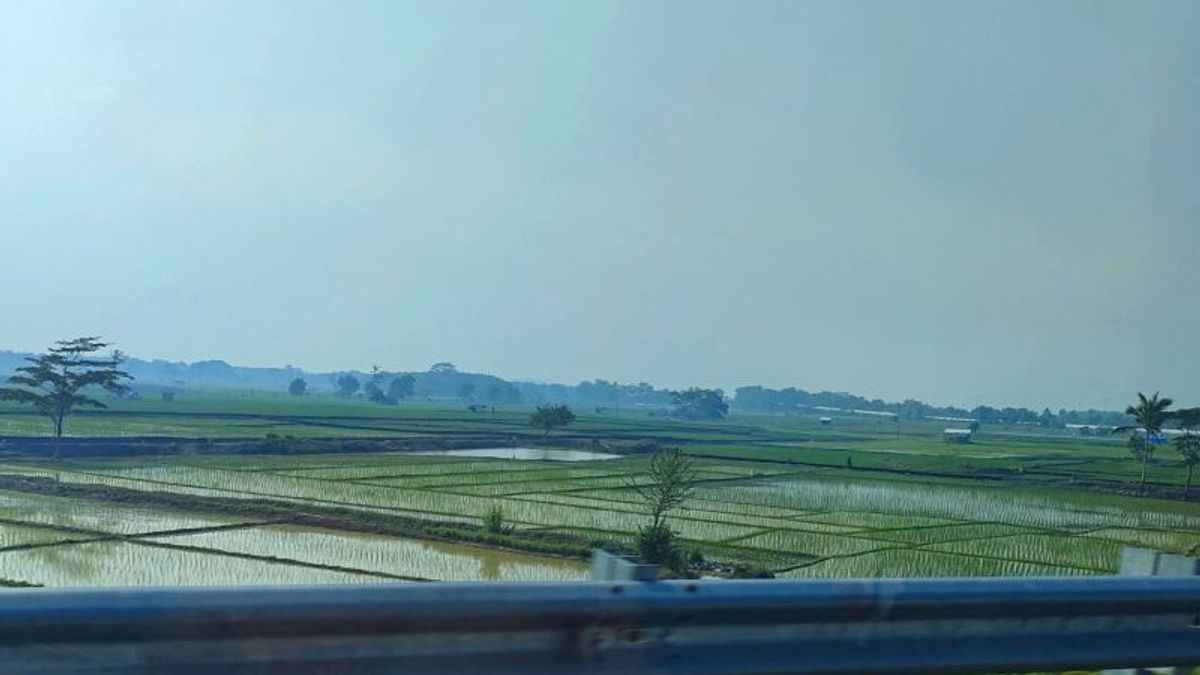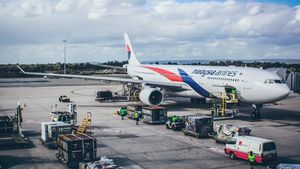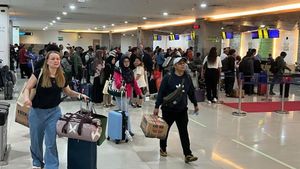Lampung Governor Arinal Djunaidi said that due to the dry season, the potential loss of harvest dry unhulled rice production (GKP) in Lampung was around 1,954 tons.
"There are currently rice plants in Lampung that are still planting, but some are affected by drought," said Arinal Djunaidi, quoted by ANTARA, Thursday, September 7.
He said that with drought due to the climate phenomenon, El Nino is estimated to have the potential to lose rice production in his area, only 1,954 tons of harvested dry unhulled rice (GKP).
"The prediction of losing harvest dry unhulled rice production due to the impact of El Nino recently is 1,954 tons, of Lampung's total production of 2.1 million tons," he said.
He explained that the rice plantation land affected by drought until the end of August 2023 totaled 765 hectares affected by drought and 93 hectares experienced puso.
"In some areas, such as in West Lampung Regency, which was affected by drought, there were 118 hectares with a production loss of 168 tons, South Lampung was hit by a drought of 205 hectares, of which 2 hectares of puso resulted in a loss of production of 378 tons of harvested dry unhulled rice," he said.
Furthermore, in East Lampung Regency, agricultural land with a drought of 68 hectares with a production loss of 93 tons GKP, Waykanan there are 45 hectares affected by drought with dry mills that failed to harvest as much as 58 tons, Tulang Bawang which experienced drought there were 135 hectares with 85 hectares of puso so that the impact of crop failure reached 884 tons of GKP.
اقرأ أيضا:
Then Pesawaran Regency, rice fields that were affected by drought, there were 120 hectares and 5 hectares experienced puso so that harvest failure reached 245 tons GKP, in Pringsewu there were 49 hectares of rice fields that were drought and 1 hectare of puso so that rice production was lost by 92 tons, and on the West Coast there were 25 hectares of drought and the impact of crop failure was 36 tons of dry rice harvested.
"Therefore, the local government has increased readiness to handle the impact of El Nino by doing several things, such as providing guidance and escort in accelerating planting and optimizing rainshed land," he said.
Then the selection of commodities, or varieties is tolerant with drought, and the right planting time. Identify water problems and resources, use organic materials to repair soil structures, reduce the use of pesticides.
"Then jointly use biological agents to deal with plant-disturbing organisms (OTP) that arise during the dry season, and encourage farmers in drought-prone areas to register for farmer business insurance. The loss of production that occurs is not too much when compared to the total production so that measures to prevent the impact of El Nino will be intensified so as not to interfere with Lampung's food security," he added.
The English, Chinese, Japanese, Arabic, and French versions are automatically generated by the AI. So there may still be inaccuracies in translating, please always see Indonesian as our main language. (system supported by DigitalSiber.id)



















